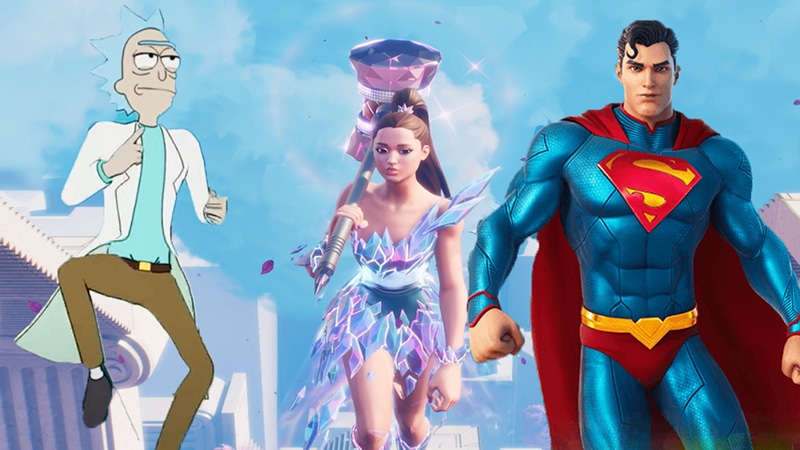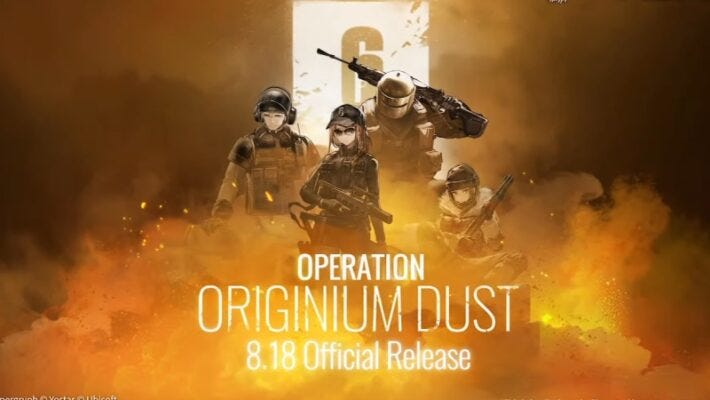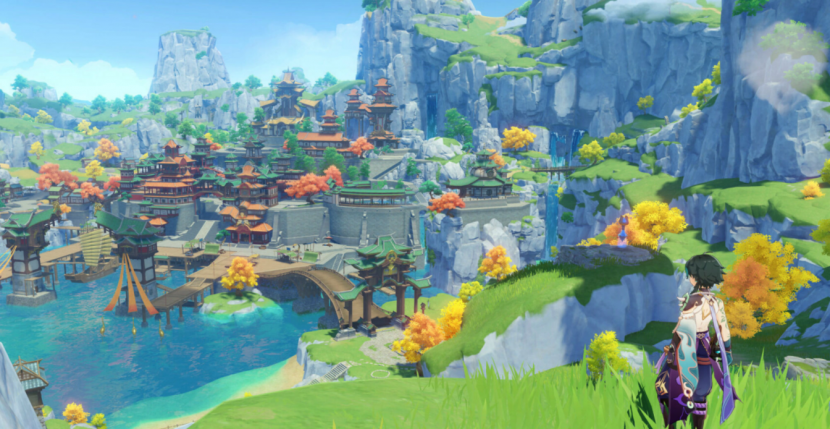Trending
Opinion: How will Project 2025 impact game developers?
The Heritage Foundation's manifesto for the possible next administration could do great harm to many, including large portions of the game development community.

Featured Blog | This community-written post highlights the best of what the game industry has to offer. Read more like it on the Game Developer Blogs or learn how to Submit Your Own Blog Post
The Fear of Missing Out, or "FOMO", is one of the most effective monetization strategies, but in this post, I want to talk about how it causes problems for consumers and developers.

The rise of live service games has also created a new marketing tactic beyond just loot boxes and gachas — limited-time events. And from there, this has evolved into massive collaborations between IPs and celebrities leading to a lot of money and awareness.
From celebrities like Arianna Grande appearing in Fortnite, to Rainbow Six appearing in Arknights, the multiple horror franchises that are a part of Dead by Daylight, and many more. However, these games are extreme examples of a marketing tactic that is very harmful to both developers and consumers — the fear of missing out or “FOMO.”
One of the more effective marketing campaigns for any product is the limited-time event, whether we are talking about TV shows, special cereal, or a certain McDonalds’ dipping sauce mentioned on a cartoon. For consumers of video games, there is this intense hatred of not having access to 100% of a game’s content, and developers and publishers have been exploiting it for years.
During the 90’s and early 2000s, preorder bonuses and collector’s editions would come with content that you couldn’t get anywhere else or after a game’s release. This strategy then extended into Kickstarter with having “backer-exclusive rewards.” What ended up happening is that while this content was great for the people who got it, it became a repellent for those that didn’t. Consumers are fine with things like having a character or content named after a backer but seeing something in-game that is permanently inaccessible due to being backer’s only was a step too far for them.
While consumers have certainly expressed their thoughts on Kickstarter rewards, there has been relatively little blowback when it comes to the use of FOMO in F2P and mobile games.
FOMO is one of the most effective forms of monetization and has been the cornerstone of many games released in the past five years. For hero collectors and gacha-styled games, limited-time banners are a great way to drive interest — and money — to these games.
Many titles have limited-time events, or seasonal events, where specific characters, skins, cosmetics, etc., can only be obtained either by getting lucky or spending money. In Princess Connect, one of the best characters in the game can only be unlocked for about three weeks a year during the summer event.

Collab events are great for raising awareness, and money, for a game
Collaborations between IPs and celebrities are also big money-making events that developers have made use of. When a big-name collab is put into a game, you not only get people who are interested in collecting everything but fans of those IPs interested in it. This is why Angry Joe decided to check out Fortnite during the Superman event, but there are so many more examples; far more than I mentioned at the start.
What makes FOMO design far better than “fun pain” is that it provides something of value to the player. Whether it is a cosmetic that makes them stand out, a new character for their build, something rare, or all the above. When Genshin Impact was released internationally in 2019, it made $60 million within its first week thanks to its first limited-time banner.
With everything said, however, FOMO design may be good for game developers and publishers, it is also one of the most abusive monetization tactics around.
Limited-time content manipulates consumers into putting more value on something because if they can’t get it now, they may never be able to get it. With Gacha games, the longer a game is out, the more characters and options become available. In turn, it becomes exponentially harder to get the one thing someone wants.
One of the reasons why collabs are so effective is that for the super fans of an IP, missing out on their favorite characters or franchises can be painful, especially for kids. The entire point of FOMO is to drive up the value of content with that fear. If you don’t get something during its limited window, you may need to wait, weeks, months, a year to get it again, if it ever comes back.
There are two distinct points I want to mention here. For games that only focus on skins/cosmetics, FOMO can manipulate someone in terms of peer pressure. If you and your friends are a fan of X, and you’re the only one who didn’t get it during the event, then you’re going to stick out like a sore thumb. Many F2P games have starter/free content that looks noticeably worse than the paying content to incentivize someone to start collecting. This is again why cosmetic-only monetization is still abusive even if there is no gameplay attached to it.
For games that make use of gameplay-related FOMO, this is even worst and far more manipulative. Not having the latest characters/options puts you at a distinct disadvantage compared to others. Many of these games have some kind of PVP mode, and you will behind in the Meta if you don’t keep up. Card games like Hearthstone and Gwent turn into arms races whenever a new expansion comes out to get the new cards and start using their new effects before the meta stabilizes again. Even if there is no PVP, games like Arknights save the best abilities and unique options for their six stars. If you’re trying to build a team or strategy around a certain style, you are going to need those characters to complete it. And let’s not forget that in many of these games that tie rarity to power, you not only need one copy of that character but multiple to rank them up and fully get them powered.
From an earlier piece I wrote about gacha design, it’s never about just needing one character, but building a team, squad, whatever, for a specific strategy or playstyle. Getting 4 out of the 5 characters needed for a set or special combination is like not having anyone at all. This was the style that Marvel Strike Force went with and how the game became team synergy-focused.
Many games that feature collab or seasonal events are all too happy to make those characters and unlocks powerful. In many of these games, your progress — especially at the late game — is going to be dependent on having strong units. Those powerful units will get you access to more resources, which in turn will make it easier to keep progressing. The beauty of this design is that not everyone is going to want every character unless they are playing for just collecting. However, if you need character X to complete a strategy, then you’re going to have to spend big when they are available, or you will miss out. For special collabs that may only happen once or yearly, good luck getting everything you need to fully use them during their windows without spending a lot of money.
So far, I have talked about how FOMO impacts things from the consumer’s point of view, but we also need to talk about this from a development standpoint and why it finally lets me put into words why I do not like Fortnite.
Live service design requires a lot of commitment on the developer’s standpoint to make it financially viable. You’re not just thinking about the content you’re making this month, but months or even years down the line. Many mobile/gacha games that are released in Japan or Asia often take a year before getting a global version for US audiences. Besides testing the waters in those regions, this also gives the developers a chance to create content and have a long-term gameplan of content before the global launch. In the mobile game I’m playing now, Punishing Grey Raven, they supposedly have content and updates sketched out for at least the next two years. Genshin Impact’s developer miHoYo has already released several major expansions for the game — adding in new modes, gameplay, regions, and of course more characters.

Genshin Impact, and most new mobile games released today, are developed with the expectation of years of post-release support
Just as it is rough on consumers to access all the content, it can become very demanding for developers not prepared to keep up with the demand for new content. As someone who makes content regularly, let me just say that it is a far different story making one original piece of content a day for a week, and having to do that for months and years; it is borderline impossible to keep up that pace forever.
And for developers who have to put out bi-weekly or monthly content updates, that is an aggressive schedule to keep up. Another consequence is that this is the videogame equivalent of slash-and-burn, with content constantly being replaced by what’s new. How many of the different pieces of content and cosmetics made in Fortnite are even accessible or cared about by the consumers at this point?
This kind of content is not meant to be long-lasting but simply discarded when the next new thing comes out. I must give credit where it’s due to Warframe for seeming to be one of the few f2p games with its store and monetization integrated that seems fairer than most.
The final point is that when you are dealing with licensed IPs, this can also create unintentional (or possibly planned) FOMO when contracts expired. With Dead by Daylight and them losing the licensing for Stranger Things, those characters, their perks, and the killer are going away after the licensing runs out. That means, gameplay-effecting content is not going to be available, and that is one of the worst things you can do in a monetization-based game (note: this is the news at the time of me writing this, there is always the chance that contracts get renegotiated and that things can change.)
For me, I’ve developed an aversion to FOMO-related content in games, much in the same way that I don’t like games that monopolize my time. Keeping content held hostage is not how you can build a long-term sustainable game and can turn these titles into a battle of the haves vs. the have nots. It is a tough balance to strike between making content that you want to make desirable, while not exploiting the consumer base to do it.
For more about F2P design and monetization, I am happy to announce book #5 “Game Design Deep Dive: Free to Play” coming sometime in 2022.” And if you want to check out my latest book on horror, it is now available for preorders.
If you enjoyed my post, consider joining the Game-Wisdom discord channel. It’s open to everyone.
Read more about:
Featured BlogsYou May Also Like